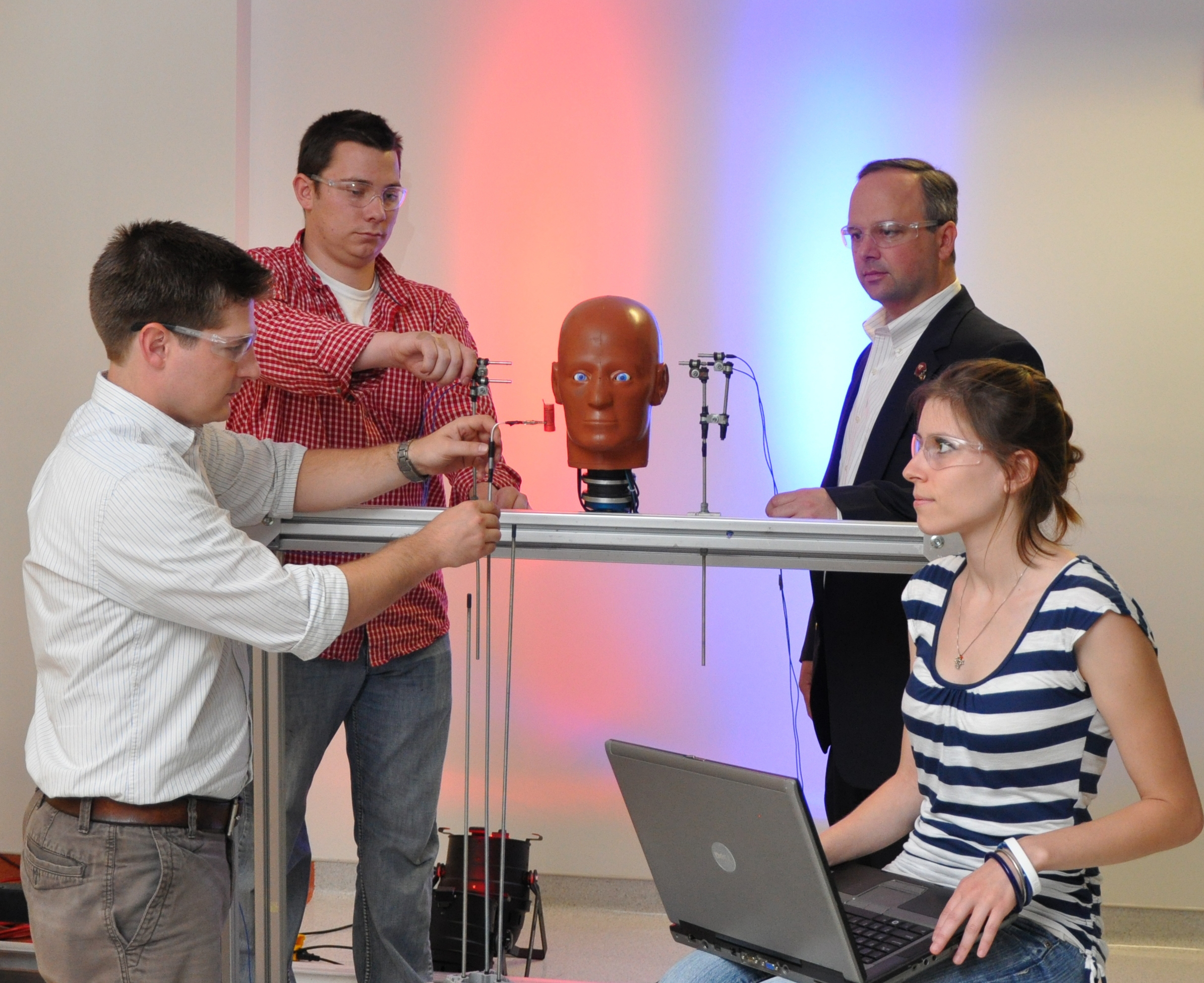Virginia Tech researchers highlight danger of firework projectiles toward eyes

Just in time for the July Fourth holiday, Virginia Tech College of Engineering researchers have published a study that shines a new spotlight on the dangers of fireworks on the human eye, that projectiles from fireworks are more likely to cause severe eye injuries than the previously believed culprit blast overpressure.
The study, released July 3 and published in the latest issue of the Journal of the American Medical Association, reinforces why states that have passed laws restricting firework projectiles observe fewer fireworks-related eye injuries.
“This is the first time anyone has quantified the pressures and it illustrates that projectiles are the problem,” said Stefan Duma, Virginia Tech professor of biomedical engineering and head of the Virginia Tech–Wake Forrest School of Biomedical Engineering and Sciences, and one of the leaders of the study.
Roughly 2 million people in the United States suffer eye injuries that require treatment annually, said Duma. The U.S. Consumer Product Safety Commission has estimated that approximately 10,000 people are treated in an emergency department for fireworks-related injuries per year, and that slightly more than 2,100 of these are specifically related to the eye. Bottle rockets and firecrackers comprise nearly half of these injuries.
The economic burden for adult visual disorders related to these injuries is huge: Nearly $50 billion per year, Duma added.
Firework-related injuries in the United States -- especially in the month surrounding the Fourth of July -- are prevalent among children and adolescents.
During the study, total and static overpressures were measured outside the test-subject eye using sensors mounted perpendicular and parallel to the explosion, respectively. Intraocular pressure was measured with a miniature pressure sensor inserted through the optic nerve. High speed video was recorded for each event, and the eyes were carefully examined for injury after each test blast. Intraocular pressure was correlated to injury risk using previously published risk functions related to the eye.
“This is the first study to document the pressure wave interaction with the eye, and to show that the pressure alone is not causing eye injuries at this level,” said Vanessa Alphonse of Shrewsbury, Mass., a doctoral student in the School of Biomedical Engineering and Sciences, who led the study as part of her thesis project while a master’s student at Virginia Tech.




